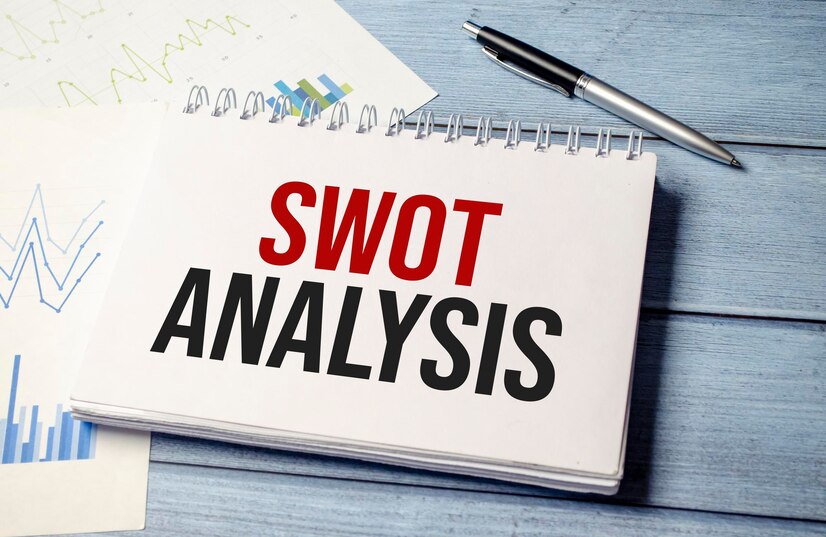The Role Of SWOT Analysis In Your Business Plan
by Ankita Tripathy Business Development 28 September 2023

A SWOT analysis is a crucial tool for businesses to shape their future.
This involves a strategic assessment of the internal strengths and weaknesses of a company, as well as external opportunities and threats.
In this article, we’ll explore what a SWOT analysis is and how it can be effectively utilized in your business plan. Consider using this business plan format to create a comprehensive plan that outlines the objectives and strategies of your company.
What is SWOT Analysis?
SWOT stands for Strengths, Weaknesses, Opportunities, and Threats. This is a strategic planning tool that allows businesses to understand the internal and external factors that can impact their operations and future growth.
By analyzing strengths and weaknesses internally, such as resources, capabilities, and organizational structure, and opportunities and threats externally from industry trends or market changes, businesses can make informed decisions. SWOT analysis provides a comprehensive view of the business landscape to help guide decision-making processes.
Incorporate SWOT Analysis into Your Business Plan

Now that we’ve established a foundational understanding of SWOT analysis, the next step is to integrate it seamlessly into your business plan. A well-structured business plan acts as a roadmap for your enterprise, outlining objectives, strategies, and the necessary steps to achieve them.
In this plan, the SWOT analysis naturally fits into the strategy section, serving as a critical tool to navigate future endeavors. By incorporating the SWOT analysis into your business plan, you create an opportunity for a thorough evaluation of your business environment. This empowers you to leverage strengths and address weaknesses while seizing opportunities and navigating potential threats.
1. Identify Strengths
When conducting a SWOT analysis for your business, the initial phase is to recognize and acknowledge your strengths. Strengths are comprised of internal assets, advantages, and characteristics that provide your business with a competitive advantage. These can range from having a talented and committed workforce to utilizing advanced technology or having a strong brand presence.
Maintain honesty and objectivity when identifying strengths. Overemphasizing them can lead to unrealistic expectations, while underestimating them may result in missed opportunities. Therefore, conducting a candid evaluation is essential in order to extract the maximum value from this exercise.
2. Recognize Weaknesses
Alongside highlighting strengths, acknowledging weaknesses is equally important. Weaknesses, as part of your SWOT analysis, refer to internal limitations or vulnerabilities that hinder the performance of your business. These can include outdated technology, a shortage of skilled personnel, or inefficient processes. Addressing these weaknesses requires a candid evaluation. Recognize areas for improvement and strategize on how to rectify them. Taking this proactive approach can bolster the overall resilience and competitiveness of your business.
3. Explore Opportunities
After evaluating your internal situation, the next step in conducting a SWOT analysis is to examine external opportunities. Opportunities are favorable circumstances, trends, or market changes that can benefit your business.
These can include emerging markets, evolving consumer preferences, or advancements in technology. To identify these opportunities, conduct thorough market research and stay updated on industry trends. Taking a proactive approach to capitalize on these openings can greatly enhance the growth and profitability of your business.
Related: 5 Free SWOT Analysis Templates To Showcase Your SWOT Analysis
4. Assess Threats
In the final dimension of SWOT analysis, we turn our attention to assessing threats. Threats consist of external factors that are often beyond your control and have the ability to jeopardize the stability and success of your business.
These may include economic downturns, competition from other companies, changes in regulations, or even natural disasters. Handle threats in a proactive and vigilant manner. By identifying potential risks beforehand, your business can prepare contingency plans and strategies to mitigate their impact on operations.
Leverage SWOT Analysis for Strategic Decision-Making
SWOT analysis goes beyond simply identifying strengths, weaknesses, opportunities, and threats. The true power lies in using this information to make strategic decisions. The insights obtained through SWOT analysis serve as the foundation for formulating and executing your business strategy.
For instance, you can leverage your strengths to capitalize on market opportunities and address weaknesses to enhance competitiveness. By identifying threats early on, your business can take proactive measures to minimize their impact.
The SWOT analysis is a fundamental tool for strategic planning. This involves assessing both internal and external factors that affect your business, allowing you to make informed decisions that drive growth and success. Note that the SWOT analysis is not a one-time task, but an ongoing process. Regularly reviewing and updating your analysis helps keep your business flexible and responsive in a constantly changing business environment.
Read Also:







































































































